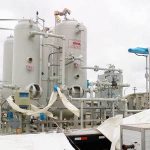In modern building systems, managing the indoor environment efficiently is crucial. Two key components in achieving this are indoor temperature and humidity sensors and lasco valves. Each plays a distinct role in environmental monitoring and control. This article provides a comparative analysis of these two vital components, focusing on their functionalities, applications, and how they integrate into modern building systems.
Indoor Temperature and Humidity Sensors: Monitoring for Optimal Comfort
Indoor temperature and humidity sensors are essential in providing real-time data on the indoor environment, which is crucial for maintaining comfort and air quality.
Functionalities
- Accurate Measurement: These sensors accurately measure the indoor temperature and humidity levels, providing vital data for climate control systems.
- Real-Time Monitoring: They offer continuous monitoring, which is essential for maintaining a stable indoor environment.
- Integration with HVAC Systems: The sensors can be integrated with Heating, Ventilation, and Air Conditioning (HVAC) systems for automated climate control.
Applications
Indoor temperature and humidity sensors are used in various settings, including:
- Commercial Buildings: For maintaining a comfortable environment for occupants.
- Data Centers: To monitor conditions and protect sensitive equipment from extreme temperatures or humidity.
- Healthcare Facilities: Ensuring patient comfort and preventing the growth of mold and bacteria.
Lasco Valves: Precision Control in Fluid Management
Lasco valves, on the other hand, are designed for precise control in fluid management systems, playing a crucial role in various applications.
Functionalities
- Flow Control: Lasco valves provide precise control over the flow of fluids in a system.
- Durability: These valves are known for their durability, offering long-term reliability in fluid control.
- Versatility: Available in various types and sizes, Lasco valves cater to a wide range of fluid management needs.
Applications
Lasco valves are integral in many systems, such as:
- Water Supply Systems: Controlling the flow and pressure of water in residential and commercial buildings.
- Irrigation Systems: Ensuring precise water distribution for agricultural purposes.
- Industrial Processes: Managing fluid flow in various industrial applications.
Comparative Analysis
While indoor temperature and humidity sensors and Lasco valves serve different functions, their roles are complementary in modern building systems:
- Functionality: Temperature and humidity sensors focus on monitoring environmental conditions, while Lasco valves are concerned with controlling fluid flow.
- System Integration: Sensors are typically part of HVAC systems, contributing to climate control. Lasco valves find broader applications in water and fluid systems, impacting various aspects of building operations.
- Application Versatility: Both components are versatile, but their applications differ. Sensors are crucial for indoor air quality and comfort, whereas valves play a vital role in fluid distribution and management.
In modern building systems, both indoor temperature and humidity sensors and Lasco valves are essential. Sensors provide the necessary data for maintaining comfortable and healthy indoor environments, while valves ensure efficient and reliable fluid control. Together, they contribute significantly to the overall efficiency and functionality of building systems. Understanding their distinct roles and functionalities is key to optimizing the performance of these systems.

 Top 5 Benefits of Having a Trading Account for Investors
Top 5 Benefits of Having a Trading Account for Investors  Why Postcard Services Are a Game-Changer for Businesses and Organizations
Why Postcard Services Are a Game-Changer for Businesses and Organizations  A Key Role for Search Engine Optimization in the Expansion of Businesses Maximizing Online Presence
A Key Role for Search Engine Optimization in the Expansion of Businesses Maximizing Online Presence  5 Optimization Tips to Make Your Business More Efficient
5 Optimization Tips to Make Your Business More Efficient  Your Guide to Water Softening Equipment Suppliers: Key Factors to Consider
Your Guide to Water Softening Equipment Suppliers: Key Factors to Consider  Importance of Professional Heating and Air Conditioning Services for Year-Round Comfort
Importance of Professional Heating and Air Conditioning Services for Year-Round Comfort  The Importance of Corporate Culture for Company Setup in UAE
The Importance of Corporate Culture for Company Setup in UAE  Pre-purchase inspections – How do you read and understand the report?
Pre-purchase inspections – How do you read and understand the report?  Venture Capital and Investing in Today’s Workforce
Venture Capital and Investing in Today’s Workforce 